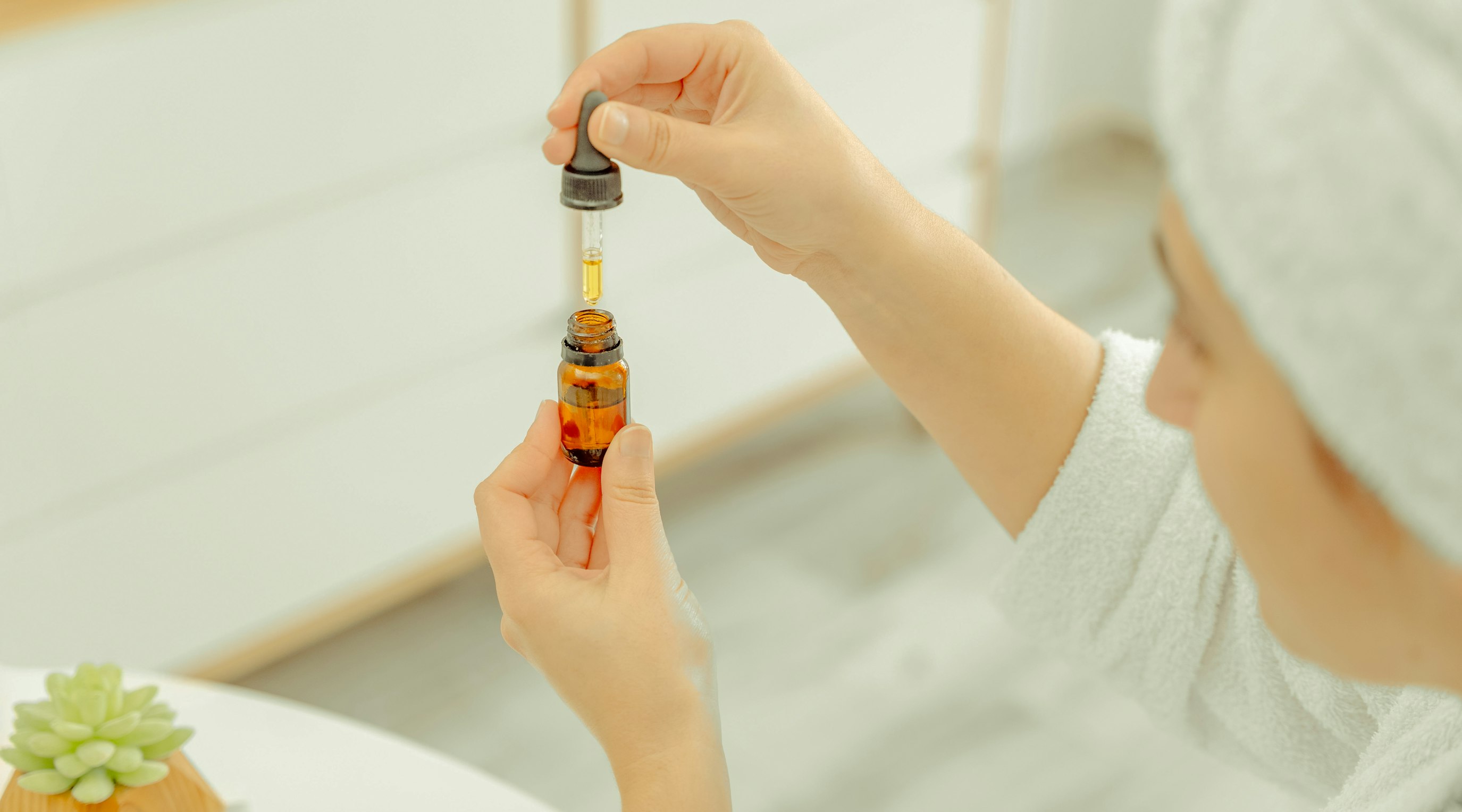The first mention of medically applied cannabis reaches back to ancient China. In 2800 B.C., Chinese Emperor Shen Nung (commonly referred to as the father of Chinese medicine) wrote about the plant’s healing properties, encouraging its application to treat a variety of ailments. From there, mention of the plant's health benefits popped up in ancient Indian, Roman, Greek, and Middle Eastern texts.
One of the main reasons that it could have the ability to ease the symptoms of so many health conditions is due to the variety of phytocannabinoids it produces. The cannabinoid in the most abundance is Tetrahydrocannabinol, also known as THC.
Cannabinoids are produced by both plants and animals. When they grow on plants they are called phytocannabinoids, “phyto” meaning “from plants” in Latin. The purpose of cannabinoids is still disputed in the scientific world, and it is largely an unstudied area of the cannabis plant, which has mainly focused on how its constituents impact mammals such as rodents.
More recently though, due to the relaxation of cannabis laws globally, research on how different phytocannabinoids affect human biological systems has got underway. Fast-forward to today and the potential applications of cannabis may be seemingly endless.
The primary active ingredient in cannabis is known as THC (tetrahydrocannabinol) which has been linked to symptom relief in those suffering from chronic pain, inflammation, depression, anxiety, seizures, and insomnia. THC, CBD, CBG and CBN are all examples of phytocannabinoids. Phytocannabinoids are produced by plants, with cannabis being the primary source.
Humans (and all animals with an endocannabinoid system) produce our own cannabinoids, known as endocannabinoids. Both endocannabinoids and phytocannabinoids interact with the endocannabinoid system (ECS) as neurotransmitters at specific receptor sites (CB1 and CB2). These interactions modulate a range of vital functions and essentially help to keep a base level of homeostasis in the body.
There are two major endocannabinoids produced in the human body. The first is Anandamide, which plays a similar role to THC. The second is 2-AG, which behaves closely to CBD when consumed. 2-AG has been found in breast milk and is considered an important part of a baby's development.
THC production in cannabis
THC is produced by the cannabis plant in the resinous glandular trichomes that are found on every part of the plant's surface. These glandular trichomes are mainly concentrated on the flowers (buds), but it is normal for the trichomes to also appear in much smaller concentrations on the stems and sugar leaves. Up close, trichomes look like tiny mushrooms (long thin stems with rounded 'heads') and are what people who use cannabis often refer to as “THC crystals”, or kief.
If you are well versed in the art of using a cannabis grinder, you will be familiar with kief, as it collects in the bottom tray underneath the filter screen. The vast majority of the THC (and other cannabinoids) produced by cannabis are found in these trichomes, along with the terpenes and flavonoids.
THC and other cannabinoids are not water-soluble, meaning they do not dissolve in water. Cannabinoids are instead fat-soluble. They are also soluble in certain ‘solvents’, including alcohol, ethanol, butane, and a range of hydrocarbons. This solubility allows these to be used as a tool to extract the trichomes which contain the cannabinoids and terpenes from the plant material.
The purpose of this is to make a concentrate of the plant's chemical makeup, known as a full-spectrum concentrate or extract. The result of the extraction process is the 'THC oil", which will contain the full spectrum of cannabinoids, terpenes, and flavonoids contained in the plant.
When extracting THC oil, and fat is used for the extraction, then it must be heated throughout the process. If the extraction is taking place with the use of a solvent, often heat is not required, which can result in a more potent end product.
When making THC extract with solvents (such as alcohol or hydrocarbon gases) the solvent strips the trichomes and oils from the plant material. This is then filtered to remove any remaining plant material before the solvent is evaporated, leaving a crude full-spectrum extract.
Exploring THC and its properties
THC and other cannabis extracts are classified as 'oleoresins', meaning a mixture of resin (trichomes), terpenes, flavonoids – and other fatty lipids. Terpenes have a modulating effect on the way cannabis interacts with the consumer's endocannabinoid system. These terpene interactions can have a marked effect on the outcomes patients experience after administration.
The main reason THC is applied in medicine is its ability to potentially offer analgesic properties. THC can be administered effectively in a wide range of dosage sizes. It has been shown that THC can be well tolerated in large doses without any toxic or life-threatening side effects, although it does offer a psychotropic, or intoxicating, effect.
Studies looking into the potential harm of a lethal dose (known as the LD50 rating) have indicated that THC is a relatively safe substance for humans. No fatal doses were observed during testing, and it was found to have an estimated LD50 rating of 1 in 20,000 to 1 in 40,000.
The chemical makeup and consistency of THC oil can vary depending on the type of extraction and also the level of purification that it has undergone. THC is most usually a sticky consistency resembling honey, but has a slightly thicker viscosity. In its purer forms, the colour of THC oil is a golden yellow or orange. The darker THC oil is, the more impurities it contains such as chlorophyll, anthocyanins, tannins, and other plant pigments.
The thicker the THC oil is, the more likely it is to have extra plant fats, waxes, and lipids. Crude whole plant extracts can be purified and filtered using methods such as distillation, which can isolate THC and other cannabinoids from each other in their purest form.
In its purest form, THC is a light yellow-golden oil. When it is in this form, you know that it is THC which has been decarboxylated, meaning the THC molecule has lost its CO2 molecular bond. If this molecular bond was still in place, then the THC extract would take on the form of a pure to off-white powder (or crystals, depending on the extraction process used). When heated, THCA converts into THC and starts to resemble golden oil.
Decarboxylated THC becomes more psychoactive than THCA because it has a stronger bond at the receptor site. THCA may have some fantastic medicinal properties that can be utilised for mild pain, nausea, vomiting, and even in the treatment of the reduction of paediatric seizures.
THC, however, could be more powerful at treating chronic pain, improving appetite, stopping spasms and tremors in Parkinson's disease and MS sufferers, reducing eye pressure in glaucoma patients, relieving gastrointestinal cramping, relieving migraines and improving joint mobility to name a few.
How does THC differ from CBD?
THC and CBD are both cannabinoids, but they differ in some very specific ways. CBD is capable of being a powerful anti-inflammatory, anticonvulsant, antianxiety and anti-seizure medication. Whilst CBD can help with pain, this is usually pain associated with inflammation. THC binds to CB1 receptor cells at the site of pain. CB1 receptors are produced by the body at pain sites in order to send endocannabinoids to deal with the pain. THC has a stronger ability to bind to the receptor than endocannabinoids like Anandamide.
If you need an alternative approach to managing your health condition, Releaf is here to help. Our monthly packages are based on your cannabis prescription, and we offer specialist consultations for medical cannabis and a unique medical cannabis card for protection.



